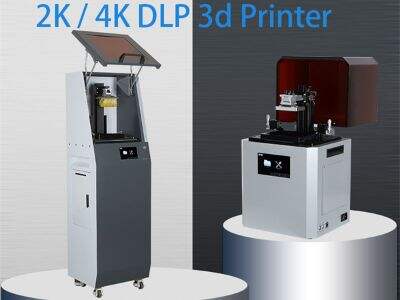A DLP ceramic slurry 3D printer is a neat way to produce objects from the ceramic. The printer employs light to harden the ceramic slurry, comparable to a thick liquid, layer by layer until the object is produced. The tech is gaining popularity because it can produce detailed and strong ceramic parts that can serve multiple purposes. Here at Shenzhen 3KU, we see great potential with this type of DLP ceramic slurry 3D printers in various ventures.
Investigating the potential of DLP ceramic slurry 3D printing
DLP ceramic slurry 3D printing is crazy versatile. That makes it suitable for making lots of other stuff. It can build parts in a machine, art work or even a cup and plate, for example. And the best part is that you can design these things on a computer and then print them out just the way you like. There’s lots of opportunity to create something that’s original and custom that hasn’t been able to exist before.
Unlocking new potentials for ceramic complex modeling
One of the most attractive aspects of a DLP ceramic slurry 3D printer is its ability to create highly-detailed patterns. It’s useful for artists or designers who are trying to build complex shapes that would be difficult to make by hand. The printer is able to produce thin walls and small details without the ceramic fracturing. This dlp printer allows makers to push their creative boundaries and craft incredible pieces.
Beyond material possibilities with DLP technology
Using DLP technology means we’re not restricted to bland old ceramics. We can blend the ceramic slurry with other materials to obtain new properties. For example, metal can be added to make the ceramic stronger and more able to withstand heat. This digital light processing dlp 3d printer is exciting, because it means that we might be able to use ceramic parts in new ways, for example, in engines or other hot places where regular ceramics would crack.
Production of high detail ceramic parts
DLP printers are great at producing high-quality parts. They do that by using light to build the object, layer by layer, with great precision. That means the finished product has smooth surfaces and crisp details, suuuper important for things like medical implants and parts of electronic devices. The dlp machine ability to make such an accurate and dependable part opens up a great many possibilities of using ceramics in high-tech applications.
DLP slurry printing revolutionizes the world of ceramic production
The way we produce ceramic objects is evolving because of DLP (slurry) printing. It is much faster and cheaper than typical traditional techniques such as molding or carving. Better still, it’s less wasteful of material: You use only the amount of the slurry you need for the print. Not only is this good for your pocketbook, but it’s better for the environment. As this technology continues to develop, it may upend how we go about producing many different types of ceramic products moving forward.

 EN
EN
 AR
AR
 BG
BG
 HR
HR
 CS
CS
 DA
DA
 NL
NL
 FI
FI
 FR
FR
 DE
DE
 EL
EL
 HI
HI
 IT
IT
 JA
JA
 KO
KO
 NO
NO
 PL
PL
 PT
PT
 RO
RO
 RU
RU
 ES
ES
 SV
SV
 TL
TL
 IW
IW
 ID
ID
 SR
SR
 SK
SK
 SL
SL
 VI
VI
 ET
ET
 HU
HU
 TH
TH
 TR
TR
 FA
FA
 MS
MS
 GA
GA
 CY
CY
 BE
BE
 IS
IS
 MY
MY

